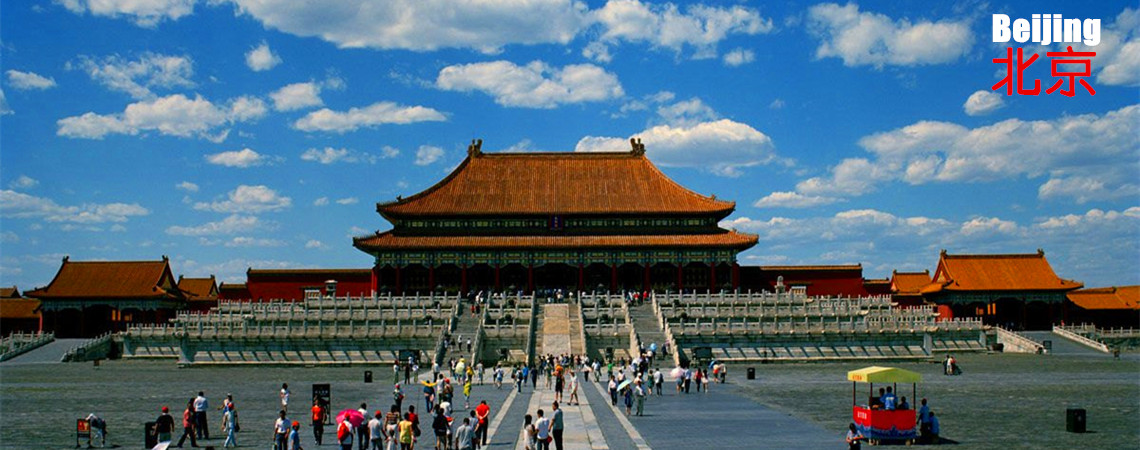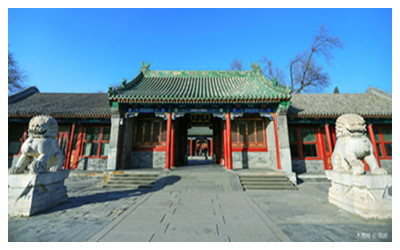Skype: neodalle-travel
Tel: +86 135 7447 2266
E-mail: sales@visitaroundchina.com

 Prince Gong's Mansion is located on the north bank of Shichahai (Shicha Lake), Xicheng District of Beijing. It is the biggest quadrangle in the world. Nowadays, it is the best preserved of the more than sixty princely mansions of the Qing Dynasty (1644-1911). It was once the residence of He Shen, a favorite court official during the reign of Emperor Qianlong (reign: 1735-1796). As soon as Emperor Qianlong died, He Shen was put into prison and sentenced to death for his corruption by Emperor Jiaqing, the successor of Emperor Qianlong. Thus, his residence was confiscated, and afterwards, in 1851, Emperor Xianfeng (reign: 1850-1861) gifted it to his sixth young brother Yixin, Prince Gong. Therefore, the residence got its name - Prince Gong's Mansion.
Prince Gong's Mansion is located on the north bank of Shichahai (Shicha Lake), Xicheng District of Beijing. It is the biggest quadrangle in the world. Nowadays, it is the best preserved of the more than sixty princely mansions of the Qing Dynasty (1644-1911). It was once the residence of He Shen, a favorite court official during the reign of Emperor Qianlong (reign: 1735-1796). As soon as Emperor Qianlong died, He Shen was put into prison and sentenced to death for his corruption by Emperor Jiaqing, the successor of Emperor Qianlong. Thus, his residence was confiscated, and afterwards, in 1851, Emperor Xianfeng (reign: 1850-1861) gifted it to his sixth young brother Yixin, Prince Gong. Therefore, the residence got its name - Prince Gong's Mansion.The mansion consists of the residence area and the garden area. The residence covers an area of 3.2 hectares (7.9 acres) and the buildings are magnificent. In the center is the main hall, rear hall and a two-storey verandah building with about 40 rooms. In the east and west, three courtyards respectively are parallel to the center. The wonderful and elegant garden occupies 2.9 hectares (7.2 acres), and is divided into the central, eastern and western parts.
The portal, facing the central axis of the garden, is a white marble arch in a European architectural style. This Western-style Gate is one of the three unique features of the garden; the other two are the 'Fu' Stele and the Grand Theater House. There were only three gates of this kind in Beijing, but the other two were destroyed. After you enter the gate, a Taihu Stone, five meters (16.4 feet) in height comes into sight. Behind the stone, there is a pond whose shape is like a bat, so it is named 'Fu Chi' with the meaning of blessing. An artificial hill stands in the middle of the garden and the 'Fu' Stele is situated in a cave in it. The bold and mighty character 'Fu' (means happiness in Chinese) was written by Emperor Kangxi who is a very great emperor in the Qing Dynasty. His calligraphy is excellent, though he rarely made inscriptions. This makes the character 'Fu' all the more precious.
The Grand Theater House is the main building of the eastern part, and can hold 200 people at a time. It is not only used to listen to Beijing Opera, but also to have the ceremonies of weddings and funerals. It is said that the whole theater did not use a nail in spite of its half-timbered architecture. Owing to its fine acoustics, it is possible to hear the opera very clearly in every corner of the hall. The decoration of the Grand Theater House is fresh and pretty, with the painting of purple flowers of wisteria vine on the columns and beams.
Huxin Pavilion in the middle of a lake is situated in the western part. Three spacious pavilions stands in the vast expanse of misty, flowing waters and it is a wonderful place to fish and admire the view. In the Qing Dynasty, drawing running water to the residence in Beijing must be approved by the emperor, and it is one of a few princely mansions which have the privilege.
There are piling rockworks, winding corridors and pavilions, pond, flowers and courtyards - wonder upon wonder throughout the place. The unique and elegant garden can be called 'pearl of Shicha Lake' and 'fairyland of the world'. Many foreign leaders and distinguished guests have visited it, including Ryutaro Hashimoto, the former Japanese Prime Minister and Lee Kuan Yew, the former Singapore premier.
Travel Tips
Add:on the north bank of Shichahai (Shicha Lake), No.17, Qianhai Xijie, Xicheng District. Beijing
Telephone: 010-83288149
Official website: http://www.pgm.org.cn/
Opening hours: 08:00-17:30
 Ask Questions ?
Ask Questions ?